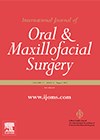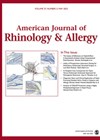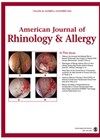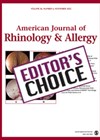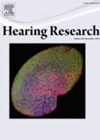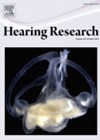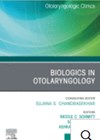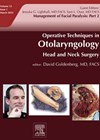
Journal Reviews
Technique for benign tumours in the tail of the parotid gland
This is a retrospective study of 89 patients from China, 49 of whom were treated surgically by a partial superficial parotidectomy through retrograde approach, and 40 treated as an extracapsular dissection for benign tumours of the tail of the parotid...
Day case orthognathic surgery
This paper analyses whether patient safety is maintained when orthognathic surgery is performed as an outpatient. This Swedish paper reviewed 165 patients, 107 of whom were to have what was termed outpatient care, and of which 101 (94%) were able...
Do adhesions actually cause nasal blockage?
All of us who perform nasal surgery are familiar with the disappointing presence of nasal adhesions (NA) or synechiae in our postop patients. These can often lead to patients deriving less perceived benefit from their surgery than that which they...
The future of biologics?
This paper takes a deep dive into how eosinophilia affects the responsiveness of the host to the two monoclonal antibodies mepolizumab and bendralizumab, both of which are active against IL5. We know that eosinophils are attracted and trapped into the...
A new hope for post-COVID olfactory loss?
Does anyone remember COVID? It seems that what happened between 2019 and 2021 is all but forgotten about. Aside from it cropping up on news feeds occasionally and a few out-of-date automated phone messages that start off with ‘During the...
A new idea for olfactory recovery, but not the evidence to support it
Smell training for olfactory loss of all types is a well-recognised treatment, and the typical regimen of rose, clove, lemon and eucalyptus is frequently used. This study looks to compare using eight essences rather than four to see if this...
Small but significant
These authors try to circumnavigate the conundrum of what is influenced by what. For something so small, the impact of the Stria Vascularis cannot be understated. The difficulty in reviewing the influence of loop diuretics or aminoglycosides on the Stria...
A twitch in time with a flicker of knowledge
The middle ear muscles can be seen as one of the ear’s safety mechanisms, and the interplay between eyes and ears has been established; think vestibular ocular reflex (VOR) or semi-circular canal dehiscence (SCCD). But can this protective mechanism be...
How to manage the cheek in gender affirming surgery
This publication discusses cheek augmentation surgery related to gender-affirming facial surgery. The publication describes the difference between the common male cheek anatomy and the desired ideal feminine appearance and how to achieve it. In the author’s experience, gender-affirming surgery patients...
Facial reanimation dynamic trends
Facial nerve paralysis leads to functional loss and aesthetic issues. Several techniques are used to restore function and to improve cosmesis. The gold standard is dynamic facial reanimation. Typically, the masseteric, hypoglossal, and contralateral facial nerve branches have been used...
Indication and timing of electrodiagnostic tests in facial palsy
This excellent review describes the benefits and limitations of electrodiagnostic testing for patients with facial paralysis. Tests such as Schirmer, stapedial reflex and electrogustometry have been largely replaced by neurophysiologic tests like nerve excitability test (NET), electroneuronography (ENoG), surface electromyography...
Exciting advances in facial reanimation
Despite several techniques for reanimation after facial paralysis, the management of these patients continues to challenge us. This paper reviews advances in facial reanimation surgery, provides updates on the timing of intervention, modifications to the traditional gracilis muscle transfer, other...

